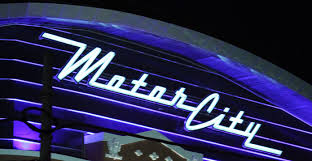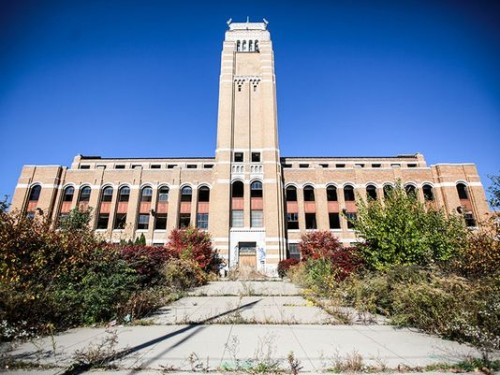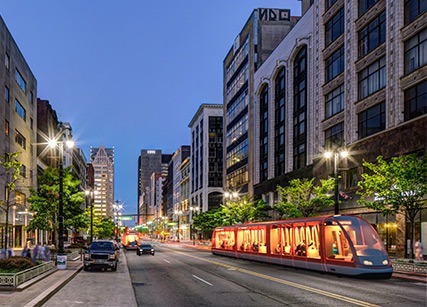

Three weeks ago, the 1.4 million square foot former home of American Motors sold at auction for a mere $500. Although, the auction was ultimately cancelled due to a tax dispute with the previous owner, this auction highlights the challenges and possible opportunities real estate in Detroit represents.
Once known as the Paris of the Midwest, the last decade has been a challenging time in Detroit: General Motors and Chrysler both went bankrupt, the city went through the largest municipal bankruptcy in US history, and the population of the city decreased by approximately 100,000 people. And yet, the Downtown, Midtown, and New Center neighborhoods of the city are experiencing a resurgence.
These areas have some amazing Art Deco buildings and industrial spaces that were built during the 1920s at the height of the US auto industry. While a lot of these buildings have sat abandoned for several years, they are being bought and renovated at a brisk clip and demand for loft and residential space is spiking. In the most recent edition of its annual Emerging Trends in Real Estate, the Urban Land Institute (ULI) ranked Detroit as the 33rd (out of 75) market to watch this year and rated the city as having “generally good” real estate prospects in the year to come. While most cities would not celebrate being ranked 33rd, this is a vast improvement compared to previous years.
In September, Michigan’s unemployment rate dropped to 5.0%, 0.1% below the national average of 5.1% for the first time in fourteen years. A small tech industry has emerged in Detroit over the last couple of years, but the city remains mostly reliant on the US auto industry for most of its economic activity.

Some of the excitement in Detroit is being generated by the construction of the M-1 Streetcar which is currently under construction. When completed the line will stretch 3.3 miles down Woodward Avenue and will connect Downtown Detroit with the New Center Area of the city.
The Illitch family is also in the process of developing the new “Detroit District,” a 45-block mixed-use project that will have residential, office, retail, and restaurant uses, anchored by the a new $532 million hockey arena.
While the number of real estate opportunities in Detroit is increasing, there are still some challenges to be addressed. Mutual cooperation between the city and the surrounding suburbs has improved during the last few years, but more cooperation is needed. The size of the city presents an additional challenge: while the Downtown, Midtown, and New Center area undergoing a resurgence, little redevelopment is occurring in the residential areas that surround these pockets of development. And, even though US automakers are expected to sell 17.5 million cars in 2015, a far cry from the 10.4 million cars the companies managed to sell in 2009 at the depth of the great recession, the city is still too reliant on one industry (Reuters).
It is hard to tell how these different competing interests will work out and whether the city will be able to maintain its economic momentum, but the next few years promise to be an interesting time for real estate in the Motor City.

